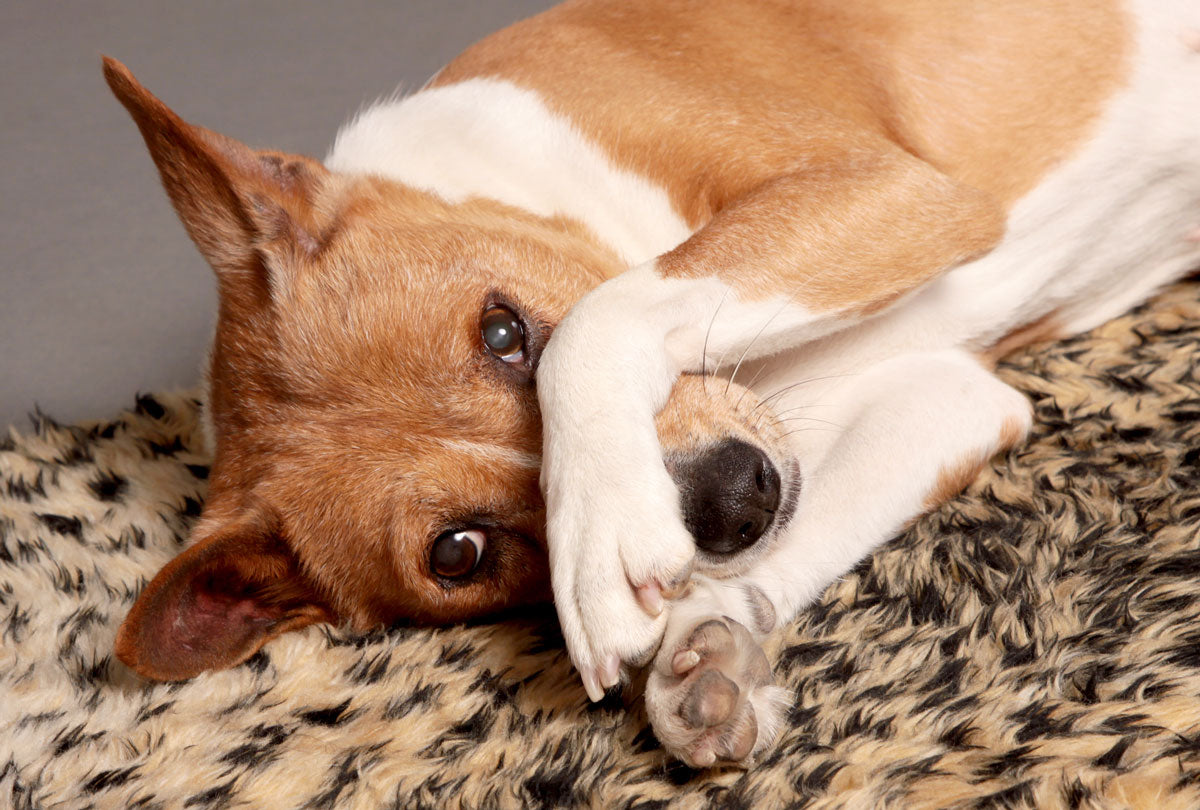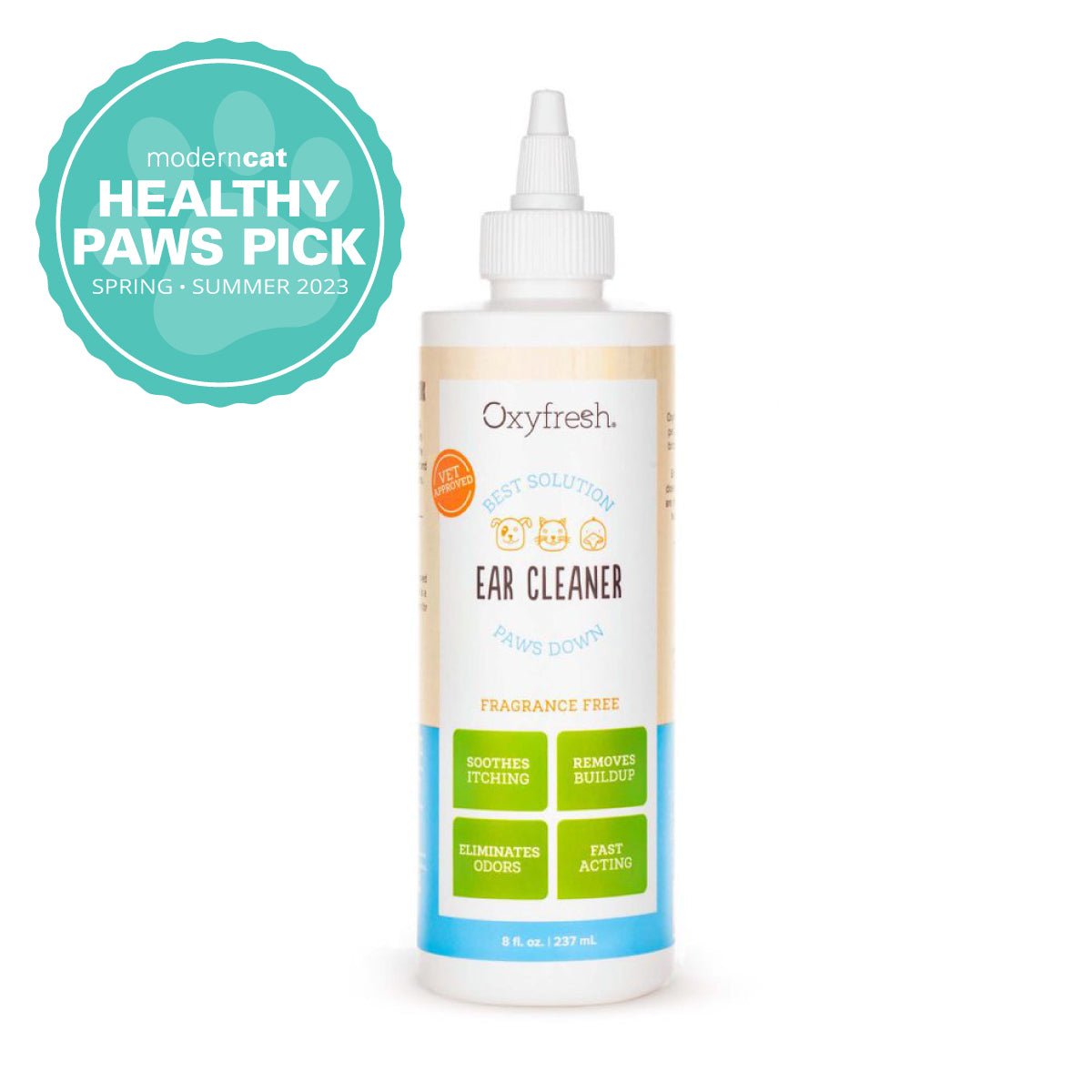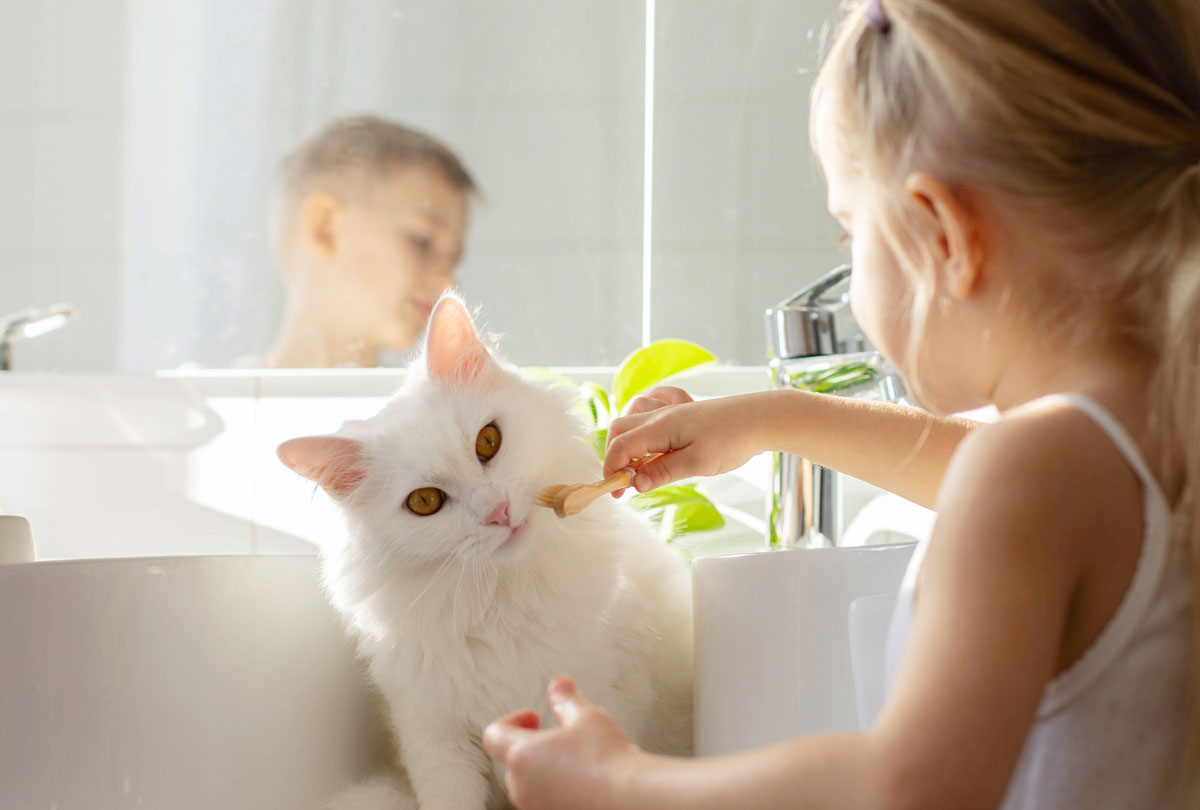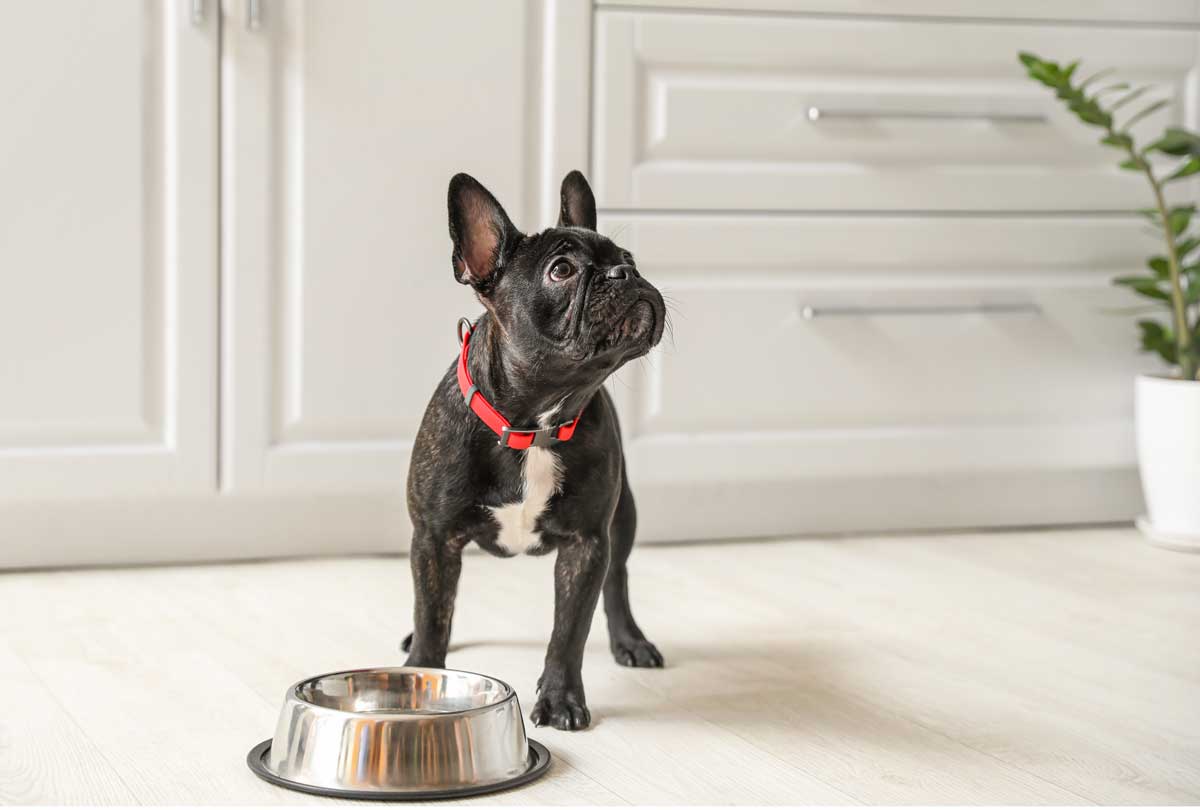"I need a little help with my ears over here! And while you’re at it, another treat, please!"
If only dogs could talk and tell us when their ears are hurting. But until that happens, their nonverbals can cue us in to a dog ear infection.
Dog ear infections plague 20% of our canine friends. How do you know if your dog is one of them ... and, most importantly, what should you do? Keep reading and get in the know!
What Causes Dog Ear Infections?
The anatomy of a dog’s ear has a lot to do with those pesky pet ear infections. Unlike a human ear canal, a dog’s ear canal is L-shaped. That means moisture can get easily trapped in the ear, encouraging yeast and bacteria overgrowth, the primary culprits that cause ear infections in dogs.
Floppy-eared breeds, "water dogs," or dogs with a lot of hair in their ears are more susceptible to ear infections, although most dogs will get at least one ear infection at some point in their lives.
Shar Peis, Cocker Spaniels, Golden Retrievers, and Basset Hounds are popular dog breeds commonly afflicted with ear infections, as well as designer crossbreeds like Labradoodles and Cockapoos.
In addition to breed, here are other factors that can predispose your pet to dog ear infections:
- Allergies: An estimated 50% of dogs with skin allergies and 80% of dogs with food sensitivities will get ear infections. Common foods that can cause sensitivity in dogs include beef, chicken, dairy products, wheat, soy and egg. In addition to dog scratching ears, dogs with allergies will often lick their paws excessively, a literal pet peeve of many dog parents!
- Water in the Ear Canal: If you have a bona-fide sprinkler lover or swimmer on your hands, you’ll want to make sure you dry their ears thoroughly after water play to avoid moisture hanging out in the ear canal. You’ll also want to be very careful during baths to not get water in the ears.
- Excessive Ear Wax: While ear wax is normal for dogs, and even healthy, it should not be abundant. Too much ear wax will inhibit proper air flow into the ear canal and encourage yeast and bacteria growth. If your dog gets a lot of ear wax, cleaning their ears with an alcohol-free dog ear cleaner on a regular basis will be an essential strategy to avoid future ear infections.
- Overcleaning the Ears: Careful! Overzealous ear cleaning can irritate dogs’ ears, also leading to infection. Looking inside your dog’s ears once a week is advised to see if they need a cleaning. And if there’s just a little bit of wax, leave their ears alone.
- Hypothyroidism: Dogs with this condition, where they have a slow metabolic rate due to an underactive thyroid gland, will often get smelly infections of the skin and ears.
- Parasites: Ticks and ear mites will cause dog ear scratching and dog head shaking, which can irritate and inflame the ears. Mites also leave behind a lot of debris, which can also lead to infection.
- Autoimmune disease: Rare diseases in dogs, where healthy cells come under attack by the immune system, can lead to inflammation and infection in the ear canal. These rare diseases include pemphigus, lupus and vasculitis.
- Foreign Bodies: Dogs love to roam the outdoors, but sometimes this can work against their ear health. Things like grass awns and foxtails can get trapped in the ears and cause an ear infection.
How Do I Know If My Dog Has an Ear Infection?
Are my dog’s ears just overly waxy and therefore smelly? Is his ear scratching normal? Why is she tilting her head like that?
It can be hard to figure out what’s normal and what isn’t with our pets’ ears. Below are some common scenarios that will inform you of when it’s time to make a call to the vet.
When to Worry About Dog Shaking Head
A vigorous dog head shake from time to time is not cause for alarm. Because dogs can’t stick a paw in their ears when they have something in it, like a chunk of wax, water, an insect, or blade of grass, head shaking is simply the dog’s natural way of dislodging the irritant.
But if the dog head shaking becomes repetitive and it’s happening several times a day for more than two days, you should make an appointment with the vet, as the most common reason for dog shaking head is a yeast or bacterial dog ear infection.
When to Worry About Dog Ear Scratching
Dog ear scratching is hard to overlook. The nonstop jangling of the collar can be downright annoying for dog parents. But in those moments of irritation, remember it’s no picnic for your dog either. Dog ear scratching is usually the first sign of an ear infection in dogs.
While there’s no exact "scratch count" that warrants a trip to the vet, it should be concerning if the scratching becomes more than what’s typical for your dog. You’ll also want to look for these signs that may accompany the scratching:
- Dog is always scratching the same ear
- Dog head shaking occurs before the scratching
- Dog doesn’t seem to hear as well (beyond their normal "selective hearing" when they're told to do something)
- You see wounds or dermatitis on the ear they’re scratching
When to Worry About Brown Discharge in Ear
All dogs get ear wax (cerumen), and a small amount of wax is a sign that the ears are functioning properly: like a self-cleaning oven, filtering out debris, pollen, and dead skin cells. Dog ear wax will have a slight odor, but it shouldn’t be overly yeasty or funky smelling. (Yes, you SHOULD be smelling your dog's ears regularly!)
Additionally, wax, which is oily, naturally repels water, which is a plus, considering many dog ear infections are caused by excess water in the ear, which creates a breeding ground for yeast. That’s why dog parents should never OVERCLEAN their pooches’ ears. A little wax is a good thing.
Little is the key word, though. Too much wax and the normal yeast and bacteria found in the ear will overproduce, which can cause infection, not to mention nasty ear odors.
What color should dog ear wax be? Pale yellow to light brown. If you notice dark brown discharge in ear, it could indicate a yeast or bacterial dog ear infection.
If the discharge in dog’s ear resembles coffee grounds, that’s a sign of ear mites, parasites that easily spread from pet to pet, and you will need to get into the vet right away. (Keep in mind, mites are most common in puppies, kittens, outdoor cats, and recently adopted shelter animals.)
If the ear discharge takes on a reddish hue, that indicates dried blood, which can occur when dogs claw themselves during intense ear scratching.
If you’re not sure whether your dog simply needs a good ear cleaning or has an infection, look for these additional signs of ear infection in dogs.
Signs of Ear Infection in Dogs
- Redness or swelling of ear
- Dog ears feel hot
- Strong odor (your nose will know!)
- Intense head shaking & ear scratching
- Yelping when ears are touched
- Rubbing ears on carpet or furniture
- Crusting or scabs in the ear
Can You Treat a Dog Ear Infection Without Going to the Vet?
Rarely do dog ear infections clear up on their own, especially if they're bacterial, and using a homemade ear infection concoction can be harmful to pets ... even if "experts" on the internet claim otherwise.
Most home remedies for dog ear infections include these ingredients, which should be kept away from your dog’s tender ears.
- Rubbing Alcohol: When rubbing alcohol is doused into an open wound, not only does it sting like crazy, but it can also damage the dog’s delicate ear tissue and ironically slow the healing process. It also cannot penetrate waxy debris.
- Hydrogen Peroxide: If your mom ever dumped hydrogen peroxide on your skinned knees as a kid, you remember the pain it caused. Same holds true for your dog’s ears. Sure, it kills bacteria, but it also destroys the cells trying to heal your dog’s ears. Plus, all that bubbling of the peroxide could really scare your pet.
- Vinegar: White vinegar, apple cider vinegar, balsamic ... no matter which kind of vinegar you have in your pantry, save it for your salad dressing and keep it far from your dog’s ears. Dog ear infections are often very itchy, and any wounds from scratching will sting when exposed to vinegar. Additionally, vinegar is mostly water, and a moist ear canal will encourage more yeast growth.
Wallet Woes: Waiting to Treat a Dog Ear Infection Can Cost You
We get that no one loves spending money at the vet, but ironically, avoiding treating the dog’s ear infection can cost more in the long run. Here’s why:
A dog’s ear is comprised of three sections: the external ear, middle ear, and inner ear. Approximately 95% of all dog ear infections affect the external ear, where the ear flap and ear canal meet. These infections are mild and will usually clear up within 1-2 weeks after treatment at the vet. (Treatment will likely include ear drops for dogs, topical medications and possibly oral antibiotics and anti-inflammatories.)
But if you don’t get your dog to the vet, the inflammation can spread from the external ear (otitis externa) to the middle ear (otitis media) or inner parts of the ear (otitis interna). Middle and inner dog ear infections are more difficult to treat and take longer to treat. Expensive surgery is sometimes required in these situations ... not to mention, the dog will be in severe pain.
What to Know About Inner Otitis in Dogs
An inner ear infection (most often from a bacterial vs. a yeast infection) can lead to nerve damage, hearing loss, vestibular disease (causes balance problems, head tilting and nausea), or an ear hematoma in dogs, oftentimes referred to as a blood blister or cauliflower ear. Dog ear hematomas occur when blood vessels rupture in the earflap (pinna) due to dog shaking head and dog scratching ear excessively. Ear hematomas require surgery.
Severe dog ear infections may require surgery to drain the middle ear of fluid, remove masses from the middle ear or eustachian tube, or treat an infection of the bone surrounding the ear. If other measures to treat the dog’s ear infection are not successful, the vet may want to perform a TECA (Total Ear Canal Ablation), which removes the ear canal.
Inner ear infection symptoms in dogs
It’s definitely time to worry (and make an ASAP appointment with the vet) if you see these inner ear infection systems in your dog:
- Vomiting & nausea
- Trouble blinking
- Dry eye
- Eye discharge
- Head tilt
- Drooping of eyelids, lips and nostrils
- Drooling
- Difficulty eating (dropping food, hard time chewing, etc.)
If Your Dog Has an Ear Infection and You Can't Afford Vet Visit ...
If you’re concerned about the cost of treating your dog’s ear infection, look for low-cost veterinary clinics in your community or animal charities. If you have a good relationship with your current vet, be upfront about your situation. Many places are willing to work with their customers with no-interest payment plans or discounts. You can also explore pet insurance for the future. And if you’re on social media, you could set up a GoFundMe.
Bottom line: you can explore your options but do it quickly. Do not wait to get your dog care if you suspect an ear infection.
How to Prevent Dog Ear Infections in the Future
Being proactive can make all the difference when it comes to avoiding dog ear infections in the future. Partnering with your veterinarian to identify an underlying cause of your dog’s ear infections, such as allergies, can help prevent future infections. Also, if you're prescribed ear infection medication for your dog, make sure to do the full course, even if your dog's ears look better. This can help prevent the infection from coming back.
You’ll also want to make sure your dog’s ears are kept dry after swimming or bathing, as excess moisture is a common cause of pet ear infections.
Keeping your dog’s ears clean at home will also help fight future ear infections. Remember ... excess wax is often the catalyst for an ear infection because it blocks air flow and encourages bacteria and yeast buildup. Please note, however, the dog ear drops you choose matter, as ear cleaners can vary greatly in quality, as well as comfort level for your canine.
Choosing the Best Ear Drops for Dogs
When shopping for ear drops for dogs (aka an ear cleaning solution), you’ll want to avoid the following ingredients:
- Alcohol
- Fragrance
- Peroxides
These ingredients can sting and cause further irritation in your dog’s ears, and peroxides can damage healthy cells and freak dogs out with all the bubbling action. These no-no ingredients are counter-intuitive to the goal of ear drops for dogs: to soothe the irritation as they clean.
What do groomers, veterinarians and legions of loyal dog parents recommend? Oxyfresh Pet Ear Cleaner. Free of alcohol, fragrance and peroxide, this fast-acting formula soothes and NEVER STINGS. It immediately helps get rid of the itch and irritation, providing your sweet pup with some sweet relief.
Oxyfresh's Secret to Healthy Dog Ears
Oxyfresh’s secret for healthy dog ears is the proprietary odor- and bacteria-fighter Oxygene®, which is a gentle, non-toxic and fast-acting oxidizer. A few drops in the ear, and your dog is going to feel so much better. (And you’ll love how easily it loosens stubborn wax and debris ... no drama-filled ear cleaning!)
Use Oxyfresh Pet Ear Cleaner as part of a regular grooming routine to help defend against future ear infections, get rid of stinky wax buildup, and prevent annoying ear itching. And if your pet has a current ear infection, apply these ear drops for dogs to help soothe the itching and clear out wax before your dog’s appointment. Remember – it doesn’t sting, so you don’t need to worry about causing your pet discomfort.
When you treat your pooch to Oxyfresh Pet Ear Cleaner, your dog may not be able to say "thank you" in words, but the tail wagging will say it all!






